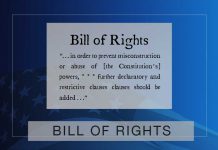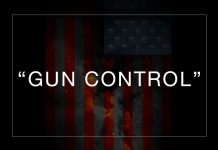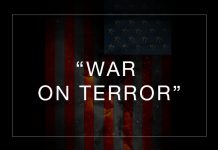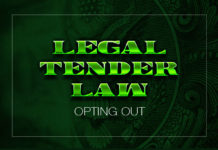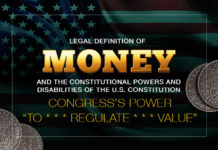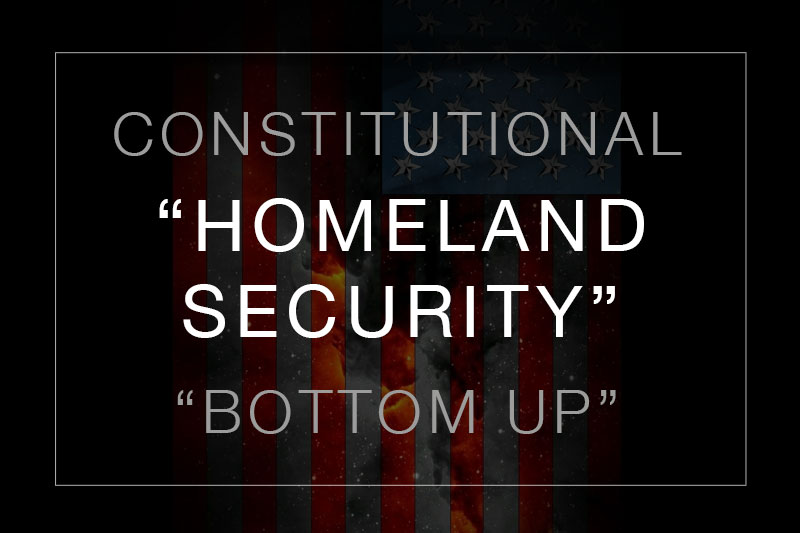Last Updated on March 8, 2023 by Constitutional Militia
The Constitution of the United States and all State constitutions derive from, and must conform to and promote, the principles of the Declaration of Independence. Even the Supreme Court has recognized that: “[t]he first official act of this nation declared the foundation of government in these words: ‘We hold these truths to be self-evident * * * .’ While such declaration of principles may not have the force of organic law, or be made the basis of judicial decision as to the limits of right and duty, and while in all cases reference must be had to the organic law of the nation for such limits, yet the latter is but the body and the letter of which the former is the thought and the spirit, and it is always safe to read the letter of the constitution in the spirit of the Declaration of Independence.”
Source: Gulf, Colorado & Santa Fe Railway Co. v. Ellis, 165 U.S. 150, 159-160 (1897).
The centrality of the Declaration of Independence.
Where “the Militia of the several States” are concerned, several provisions of the Constitution must be considered:
ARTICLE I, SECTION 8, CLAUSE 15—“The Congress shall have Power * * * To provide for calling forth the Militia to execute the Laws of the Union, suppress Insurrections and repel Invasions[.]”
ARTICLE I, SECTION 8, CLAUSE 16—“The Congress shall have Power * * * To provide for organizing, arming, and disciplining, the Militia, and for governing such Part of them as may be employed in the Service of the United States, reserving to the States respectively, the Appointment of the Officers, and the Authority of training the Militia according to the discipline prescribed by Congress[.]”
ARTICLE II, SECTION 2, CLAUSE 1—“The President shall be Commander in Chief * * * of the Militia of the several States, when called into the actual Service of the United States[.]”
AMENDMENT II—“A well regulated Militia, being necessary to the security of a free State, the right of the people to keep and bear Arms, shall not be infringed.”
AMENDMENT V—“No person shall be held to answer for a capital, or otherwise infamous crime, unless on a presentment or indictment of a Grand Jury, except in cases arising in the land or naval forces, or in the Militia, when in actual service in time of War or public danger[.]”
So the Constitution recites. But what do these provisions individually import? How do they interrelate, both among themselves and with other relevant provisions of the Constitution? And by what means of objective verification or falsification can Americans be certain? Just as answers to these questions are not self-evident, the proper method for arriving at them is not self-explanatory. So a careful study of that method is a necessary preliminary, because no one can determine what the Constitution actually means without first undertaking a detailed analysis of how to interpret the Constitution.
The initial step must be to take close account of the legal and historical contexts in which the Constitution arose, in order to determine the source and substance of its authority. For neither the Constitution nor least of all the principles it embodies arose spontaneously out of nothing. That source and substance must be found in the Declaration of Independence.[1]
It is perverse to pretend (as some will persist in doing) that the Declaration of Independence is not the original and still fully enforceable supreme organic law of each of the several States and of the United States as a whole. For, if the Declaration were not such, then neither WE THE PEOPLE, nor any of the States individually, nor the United States collectively could have claimed since 1776, or can claim today, an independent sovereignty on the basis of which to enact any other laws, such as the States’ constitutions, the Articles of Confederation, the Constitution of the United States, and all of the statutes made in pursuance thereof. Yet, plainly, the Declaration established, not only when an individual living in the pre-constitutional era became an American citizen, independent of Britain as a matter of law as well as fact, but also when all American citizens, in their collective political capacities as “the good People of these Colonies”, became independent sovereigns, no less as a matter of law.[2]
Even the Supreme Court has recognized that
“[t]he first official act of this nation declared the foundation of government in these words: ‘We hold these truths to be self-evident * * * .’ While such declaration of principles may not have the force of organic law, or be made the basis of judicial decision as to the limits of right and duty, and while in all cases reference must be had to the organic law of the nation for such limits, yet the latter is but the body and the letter of which the former is the thought and the spirit, and it is always safe to read the letter of the constitution in the spirit of the Declaration of Independence.”
This constricted application of the Declaration forgets, however, that, had the Colonies failed to secure their independence by force of arms, and had the authority of the King been reestablished in America—if “[t]he first official act of this nation” had died aborning—no one could have contended that the Colonies’ resistance against the Crown, or their treatment of its loyal subjects, rested upon any legal foundation.[3] That is, the Constitution is properly law only because the Declaration of Independence is prior and higher law.
Through and under the auspices of the Declaration (not the Constitution), the Colonies “assumed among the powers of the earth, the separate and equal station to which the Laws of Nature and Nature’s God entitle[d] them”, and then asserted “[t]hat these United Colonies are, and of Right ought to be FREE AND INDEPENDENT STATES; * * * and that as Free and Independent States, they have full Power to levy War, conclude Peace, contract Alliances, establish Commerce, and do all other Acts and Things which independent States may of right do”[4]—which includes all acts of a legislative, executive, and judicial nature appertaining to sovereign governments. Thus, the States individually and WE THE PEOPLE collectively took up their sovereign powers perforce of the principles of the Declaration. And their sovereignty was recognized by other nations that accepted the Declaration as part of the Law of Nations, stating the fact of and the legal grounds for the Colonies’ separation from the great Britain.
For that reason, WE THE PEOPLE cannot exercise their sovereignty in any manner that contradicts its origin in an nature as defined by the Declaration. They cannot form state constitutions and enact their own state laws—or combined the States in the “more perfect union” of “the United States of America” under the Constitution[5]—or perforce of the Constitution empower a General Government and through the General Government enact laws—in any manner inconsistent with the Declaration. Rather, they must always exercise their political powers only on the basis of and to advance in mankind’s estimation the Declaration’s principles. Therefore, it is not simply “safe”, but is always necessary, to read, construe, and especially apply the letter of the Constitution according to the letter of the Declaration.[6]
The conclusion must be that, far from having no force of law itself, the Declaration of Independence is the source of WE THE PEOPLE’S sovereignty, and through delegation from them, not only of such sovereign powers as the several States individually and the United States collectively may exercise, but also of such disabilities—that is, absences of power—as constrain them legally and politically. Therefore, those powers and disabilities must be predicated, conditioned, and applied in all of their particulars upon and according to the principles of law that the Declaration explicitly invoked as the bases for attesting that the “Free and Independent [American] States * * * have full Power * * * to do all * * * Acts and Things which Independent States may of right do”.[7]







